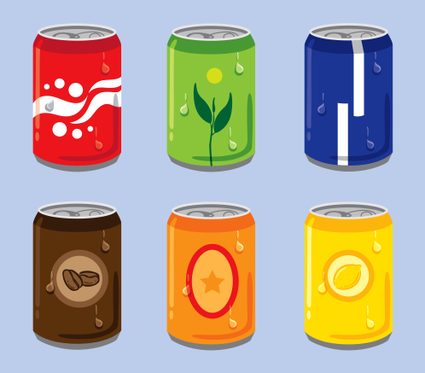Added Sugar Intake Calculator
An average American eats of added sugar a day! 🥄 And how much sugar a day should he eat? The (AHA) recommends a sugar intake per day no more than six teaspoons for women and 9 for men, while kids younger than two years old shouldn't eat any added sugars.
They shouldn’t, yet it doesn’t always mean they won’t. Added sugars may be found in formulas used for complementary feeding, and there is an in infants and toddlers. And it is a problem, as by 2030, .
Food and drinks contain both natural and added sugars. The second ones are added during the processing of packaged foods. Why do we consider them the bad guys? They do not give anything besides calories.
This added sugar intake calculator is here to help you control how much added sugars you consume, sometimes unknowingly, daily. Keep reading this article, in which we explain the consequences of exceeding the recommended sugar intake, how to search for added sugars in our diet and what healthier alternatives (such as artificial sweeteners) we have.
Are you sure your diet is only full of the good stuff? Check it out with our diet risk score calculator 🍩
We try our best to make our Omni Calculators as precise and reliable as possible. However, this tool can never replace a professional doctor's assessment. All information on this website is for informational purposes only and is not intended to serve as a substitute for medical consultation. Always consult your results with a health care provider.
Sugar and health
Too much sugar is unhealthy. Yes, we all know that. But what precisely does unhealthy mean?
First, have you ever wondered about the number of calories in a teaspoon of sugar? It's 20 kcal! As most adults exceed AHA limits of daily sugar intake, its effect is relatively easy to tell — a pandemic of obesity, increased number of diabetes, and heart diseases are the leading causes of death in developed countries.
Yet, it's not only gaining weight, worsening skin conditions, but also severe life-threatening consequences. Higher sugar intake per day , by the accumulation of fat in the liver.

Too high sugar intake results in insulin resistance. It means glucose cannot enter your cells, and it's a signal for your body to eat more. More insulin is produced, which at the beginning works, but in a time, your tissues become insulin resistant. It's a vicious circle, which without any visible symptoms, leads to type 2 diabetes.
You can continue reading about insulin resistance in our insulin dosage calculator.
Added sugar, which we focus on most in this calculator, also causes higher blood pressure, inflammation. All those factors: fatty liver, diabetes, hypertension, and inflammation are connected with a higher risk of heart attack, stroke, and overall mortality.
Skinny fat phenomenon
So let's say you are the lucky one. You may not care at all about calories in a teaspoon of sugar and still be in shape. The thing is, it's tricky — and it's called a skinny fat phenomenon. Having a "normal" BMI doesn't imply you're healthy.
As a result of a non-balanced diet (among other things — eating many added sugars), you have low muscle mass, even if your fat levels are not high. 💪 As muscles improve metabolism, protect vital organs, help in daily activities, their lack may lead to fatigue and difficulties in performing day-to-day chores.
So-called 'normal weight obesity' puts people at risk of diabetes. Doctors noted that they present high diagnostic markers for diabetes: high blood sugar, low good cholesterol, high triglycerides, inflammation, or high blood pressure. . It is just as risky as obesity, but without the extra weight.
🙋 Not sure how to interpret your blood sugar levels? Then you might like to take a look at the blood sugar converter to find out.
How to use an added sugar intake calculator?
This added sugar intake calculator is easy to use. It calculates only the amount of added sugar intake.
First, choose whether you're a man or a woman. 👨👩 AHA recommendations on daily sugar intake differ depending on the sex.
Then, out of all categories, choose how many products or quantities you eat in a day. The calculator includes both obvious sugary foods, such as chocolate or cakes, and products with hidden sugar, where we don't suspect its presence.
✅ As you fill in the fields, the calculator assesses your daily intake of added sugars (in teaspoons). At the end, you'll find some practical information on how to cut down on this white enemy.
Where to find information?
If you want to eat sugar, it's okay, as long as it's not in enormous numbers. How to know how much sugar a day you eat? First, you need to know in what product the companies add sugar. It's not only sweetened drinks or baked goods 🍰 but also flavored yogurts or bread 🍞 , the list of the top sugary products we list in the paragraph below.
Since 2021, all Nutrition Facts labels have to list added sugars separately from the natural ones. It's given in the number of grams and the percent Daily Value (%DV).
If the product is low in added sugar, the DV value is 5% or less. On the other hand, if DV is 20% or more, the food is a high source of added sugars.
Below you have the names of all the added sugars you may find in your food:
- Agave nectar;
- Brown sugar;
- Cane crystals, cane sugar;
- Corn sweetener, corn syrup;
- Crystalline fructose, fructose;
- Dextrose;
- Evaporated cane juice;
- Fruit juice concentrates;
- Glucose;
- High-fructose corn syrup (glucose-fructose syrup);
- Honey;
- Invert sugar;
- Lactose;
- Malt sugar, malt syrup;
- Maltose;
- Maple syrup;
- Molasses;
- Raw sugar; and
- Sucrose.
Top high-in-sugar foods and drinks
Here we list some of the products that are high in added sugars:
- Sweetened beverages. 🥤 Luckily, more and more companies are introducing more sugar-free options, often with artificial sweeteners instead.
- Cookies, chocolates, candies, and pies. 🍫
- Ice cream. 🍦
- Flavored yogurts.
- Energy drinks.
- Jam, marmalades.
Have you ever noticed how sour and sweet at the same time Fanta or Sprite are? They both contain huge amounts of sugar and citric acid for taste and conservation. And then they need to add more sugar because we wouldn't drink a beverage that sour.

How can I cut down on sugars?
As you now know, we are surrounded by loads of added sugar in the food and drinks we consume every year. Here are some tips:
- Switch to artificial sweeteners. That's the easiest way to change into better habits immediately. Remember to consume those products considerately; anything in great amounts may be harmful.
- Change sodas for water. That's the next step after artificial sweeteners.
- Look at the Nutrition Facts labels; from 2021 all the products should have added sugar listed separately.
- Watch out for all of the different names of added sugar products use to trick us. You can find them in the section above.
- Eat full nutrient-dense meals. If you have enough protein and fats, your sugar cravings lower significantly.
Although the journey seems complicated, try taking at least some of those little steps. The need to eat sugar is nothing less than addiction, and you may fight that addiction by reducing your contact with added sugar.
What other options do we have? Artificial sweeteners vs sugar
Artificial sweeteners have revolutionized the world of processed food. Remember that there are about 20 kilocalories in a teaspoon of sugar? Artificial sweeteners are chemicals more than a thousand times sweeter than sugar, and so they're added to food and beverages in smaller portions. Their use results in a significantly lower sugar intake.
Yet, are they safe? In moderate amounts — yes. Of course, if you were to drink one liter of diet coke every day, it wouldn't be the best option. Their side effects often include bloating, diarrhea, but no study so far has found any link between sweeteners in humans and metabolic disorders or cancer.
Name | Sweeter (than sugar)? | Additional info |
|---|---|---|
Aspartame | 200x | |
Acesulfame K | 200x | full name: Acesulfame potassium. |
Advantame | 20,000x | |
Glucose-fructose syrup | 1.5x | Made from starch. |
Neotame | 13,000x | |
Saccharine | 700x | |
Sucralose | 600x | |
Sugar alcohol (erytritol, maltitol) | 600x | Laxative effect. Less decaying effect on teeth. |
Stevia | 300x | Natural sugar, not for baking. |
We try our best to make our Omni Calculators as precise and reliable as possible. However, this tool can never replace a professional dietitian's assessment.
How do I calculate my daily intake of added sugar?
To calculate your daily intake of added sugar, you need to:
- Determine what type of products you eat in a day.
- Find out the amount of added sugar each product has. Usually, you can find this information in the packaging itself.
- Decide how much of each of these products you eat daily.
- For each product, multiply the amount of food you eat daily by the amount of added sugar it has.
- Add the results of each multiplication from the above step.
What is the recommended sugar intake?
According to the American Heart Association (AHA), women should have no more than six teaspoons of sugar per day, while men should have no more than nine teaspoons of sugar per day.
How many granola bars can I have before crossing my daily sugar limit?
You can have up to two or three granola bars per day. This depends on whether you are a woman (two granola bars per day) or a man (three granola bars per day).
How much added sugar does 2 cups of granola have?
Two cups of granola have seven teaspoons of sugar. This is one tablespoon more than the daily recommendation for a woman. However, this is less than the daily limit for a man.
How much added sugar is in a portion of salted pretzels?
A portion of salted pretzels has one teaspoon of sugar; in other words, it has about 5 grams of sugar. Remember, however, that this is only an estimate, and the precise amount of sugar will vary from recipe to recipe.